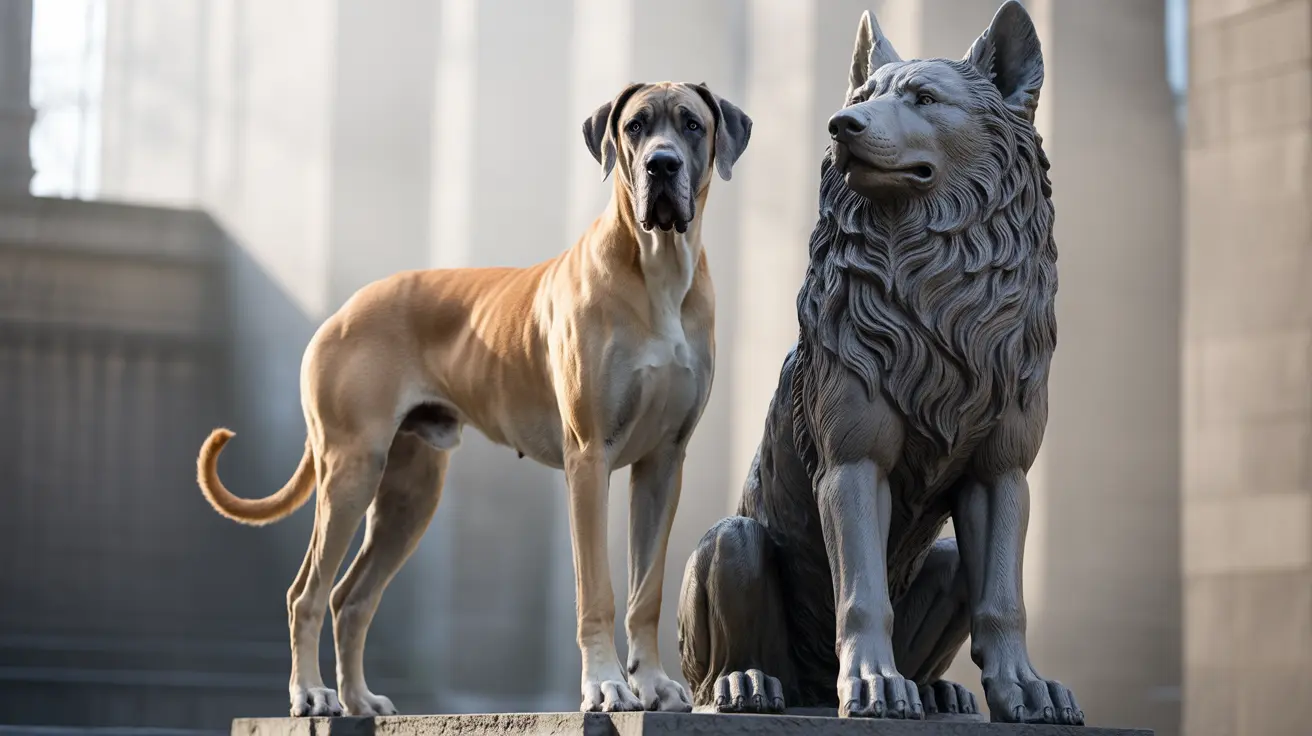Introduction
Understanding wolf size compared to dogs reveals fascinating insights into canine evolution and physical capabilities. While wolves are often perceived as towering giants compared to domestic dogs, the reality is more nuanced. This comprehensive guide explores the size differences between wolves and various dog breeds, examining how natural selection and selective breeding have shaped these magnificent canines.
As we delve into this comparison, we'll discover that while wolves are indeed impressive in size, some domestic dog breeds can actually match or exceed them in both height and weight. This knowledge is crucial for understanding canine evolution and appreciating the diversity within the dog family.
Gray Wolf Dimensions: The Wild Standard
Gray wolves, the largest wild canine species, typically measure 6.6 feet in length (including tail) and stand 26-32 inches at the shoulder. Adult males usually weigh between 60-145 pounds, with some exceptional specimens reaching up to 175 pounds. These measurements establish the baseline for comparing domestic dog breeds to their wild ancestors.
The impressive size of wolves directly relates to their role as apex predators, requiring substantial muscle mass and bone structure to hunt large prey and survive in harsh wilderness conditions.
Giant Dog Breeds vs. Wolves
Several domestic dog breeds rival or surpass wolves in size:
- English Mastiffs can weigh 150-250 pounds
- Great Danes typically stand 28-32 inches at the shoulder
- Saint Bernards often weigh between 140-260 pounds
These breeds demonstrate how selective breeding has created dogs that exceed their wild ancestors in pure size, though their builds and proportions differ significantly from wolves.
Physical Adaptations and Differences
Despite similar size measurements in some cases, wolves and dogs show distinct physical characteristics:
- Wolves have proportionally larger paws and heads
- Wolf skulls are more robust with stronger jaw muscles
- Wild wolves maintain leaner, more athletic builds
- Domestic dogs often have more varied body proportions
Impact of Domestication on Size
Domestication has led to incredible size diversity in dogs, from tiny Chihuahuas to massive Mastiffs. This variation showcases the plasticity of canine genetics and the power of selective breeding. However, most domestic dogs remain smaller than wolves, with only a handful of breeds reaching or exceeding wolf dimensions.
Frequently Asked Questions
How do the size and weight of gray wolves compare to large dog breeds like Great Danes and English Mastiffs?
While gray wolves typically weigh 60-145 pounds and stand 26-32 inches tall, some large dog breeds can exceed these measurements. English Mastiffs can weigh up to 250 pounds, and Great Danes can stand taller at the shoulder, though wolves generally maintain a more muscular, athletic build.
What are the main physical differences between wolves and large domestic dogs despite similar heights or weights?
Wolves have proportionally larger heads, more robust skulls, bigger paws, and leaner, more muscular builds focused on endurance and hunting. Large domestic dogs often have different body proportions due to selective breeding for specific traits.
Can wolfdogs be larger than pure wolves or typical dog breeds, and how does their size vary?
Wolfdogs typically fall between wolves and dogs in size, usually weighing 70-120 pounds. Their size can vary significantly depending on the dog breeds in their ancestry and the percentage of wolf genetics.
Why do some dog breeds like Irish Wolfhounds and Saint Bernards exceed wolves in size?
Selective breeding for specific purposes (like hunting large game or rescue work) has allowed breeders to develop dogs larger than wolves. This artificial selection has created breeds that surpass their wild ancestors in pure size, though often with different body compositions.
How does the evolutionary adaptation of wolves influence their size and athletic build compared to domestic dogs?
Wolves evolved for endurance hunting and survival in the wild, resulting in lean, athletic builds with proportional features optimized for hunting and traveling long distances. Domestic dogs, bred for various purposes, often have specialized body types that may sacrifice this natural athleticism for other traits.
Conclusion
While wolves remain impressive specimens of the canine world, their size comparison to dogs isn't as straightforward as many believe. Understanding these differences helps us appreciate both the raw power of wild wolves and the remarkable diversity achieved through dog breeding. Whether studying natural selection or artificial breeding, the size variations between wolves and dogs continue to fascinate researchers and animal lovers alike.






